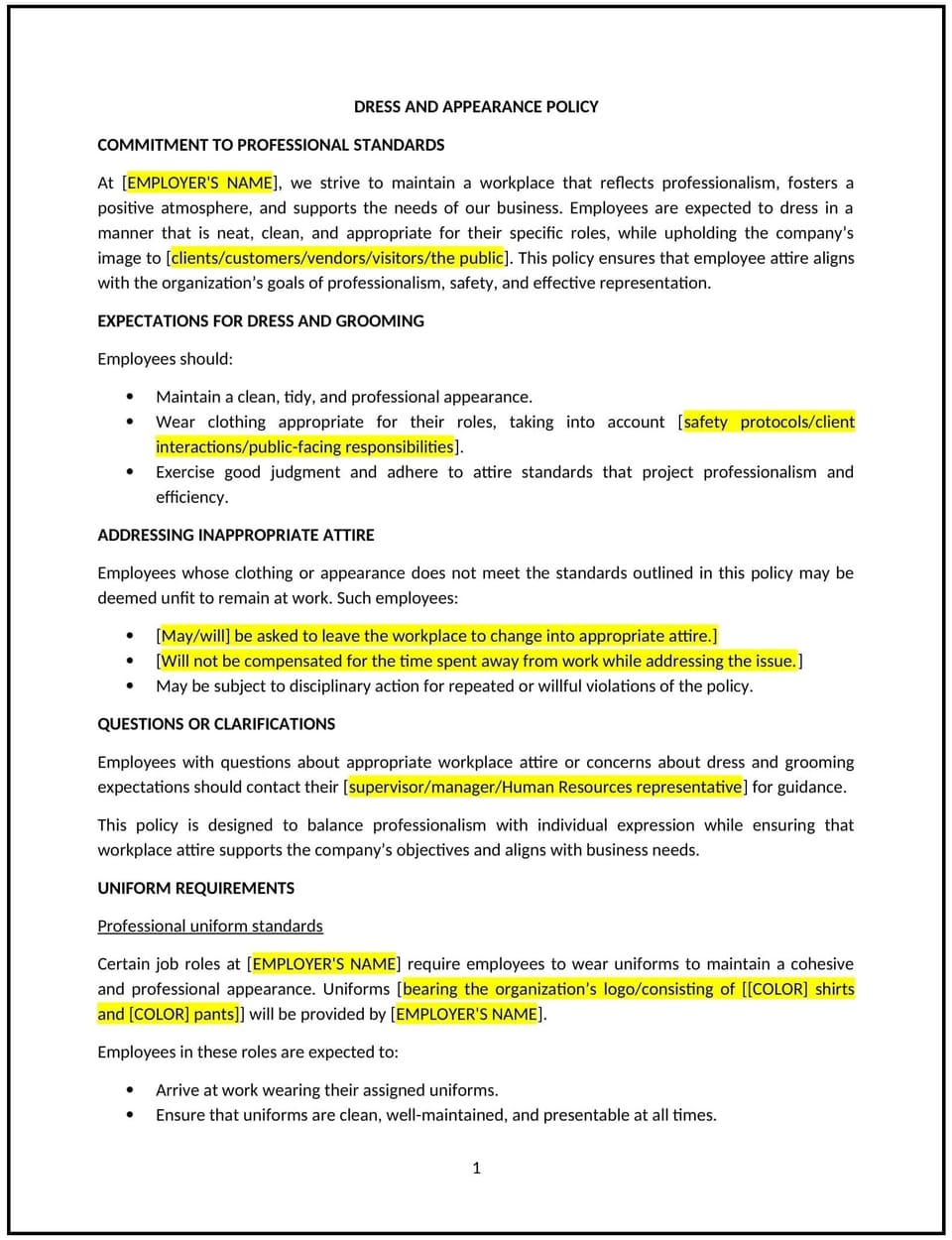Dress and appearance policy (Tennessee): Free template

Dress and appearance policy (Tennessee)
This dress and appearance policy is designed to help Tennessee businesses establish guidelines for employee attire and grooming standards. It outlines expectations for maintaining a professional appearance while respecting individual expression.
By adopting this policy, businesses can promote a professional work environment, ensure safety, and align with industry standards.
How to use this dress and appearance policy (Tennessee)
- Define dress code: Specify acceptable attire, such as business casual, uniforms, or safety gear.
- Address grooming standards: Outline expectations for personal hygiene and grooming.
- Set safety requirements: Include guidelines for attire in hazardous work environments, such as closed-toe shoes or protective clothing.
- Train employees: Educate staff on the policy and its importance for professionalism and safety.
- Review and update: Assess the policy annually to ensure it aligns with evolving business needs and workplace trends.
Benefits of using this dress and appearance policy (Tennessee)
This policy offers several advantages for Tennessee businesses:
- Promotes professionalism: Ensures employees present a polished and professional image.
- Enhances safety: Provides clear guidelines for attire in hazardous work environments.
- Supports brand image: Aligns employee appearance with the business’s values and industry standards.
- Encourages consistency: Provides clear expectations for all employees.
- Aligns with best practices: Supports a structured approach to workplace appearance.
Tips for using this dress and appearance policy (Tennessee)
- Communicate the policy: Share the policy with employees and include it in the employee handbook.
- Provide training: Educate staff on the policy and its importance for professionalism and safety.
- Monitor compliance: Regularly review employee attire and grooming to ensure adherence.
- Address issues promptly: Take corrective action if dress code violations occur.
- Update regularly: Assess the policy annually to ensure it aligns with evolving business needs.
Q: How does this policy benefit businesses?
A: It promotes professionalism, enhances safety, and supports the business’s brand image.
Q: Can businesses enforce different dress codes for different roles?
A: Yes, dress codes can vary based on job responsibilities, such as safety gear for warehouse staff.
Q: What should businesses do if an employee violates the dress code?
A: Address the issue privately, remind the employee of the policy, and take corrective action if necessary.
Q: How can businesses balance professionalism with individual expression?
A: By allowing flexibility within the dress code, such as permitting casual Fridays or personalized accessories.
Q: How often should businesses review this policy?
A: Businesses should review the policy annually or as needed to address changing workplace trends.
This article contains general legal information and does not contain legal advice. Cobrief is not a law firm or a substitute for an attorney or law firm. The law is complex and changes often. For legal advice, please ask a lawyer.


